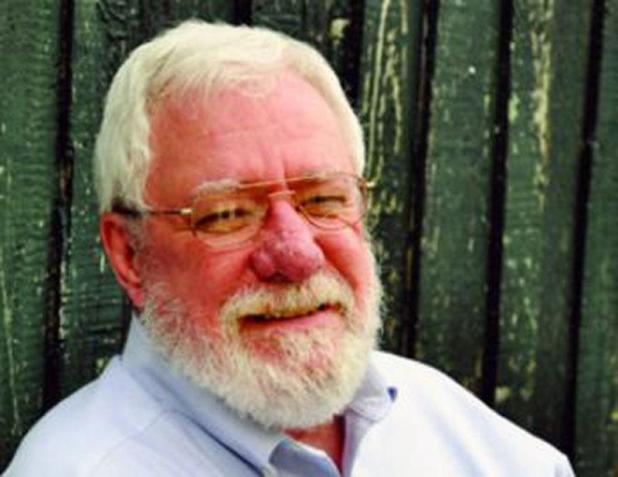
Jim Bradshaw
Chilly, but no record
It’s not unusual to get a night, or even two, when hard freezes visit Acadiana, but it is uncharacteristic for us to see a weeklong surge of frigid nights like the one that ushered in the new year.
Still, Old Man Winter will have to work some to beat the bleak, blizzardy January of 1940. The overnight temperature fell below freezing — most nights far below freezing — on 22 of the 31 days of that month, and into really icy weather for 18 consecutive nights. The temperature dropped to 25 degrees or below on 12 of those nights, and into the teens on five.
That was not only the coldest January on record for much of south Louisiana, it was the coldest of all months for most of us, although February 1905 holds the record in Abbeville (45.5), Grand Coteau (45.0), Jennings (44.2), New Iberia (46.4), Opelousas (43.3) and Rayne (45.4).
The chill of 1940 was tough on people, pipes, and plants. The headline on the front page of the Lafayette Advertiser on Jan. 19 reported, “Louisiana Shivers as Frigid Blast Sweeps to the Coast” as “Lafayette residents shivered and slipped their way to work this morning following one of the severest cold spells this city has experienced in several years.”
J.J. Davidson, the government forecaster in Lafayette, “declared … that after thawing out the box in which his instruments were kept … he found the lowest temperature reached last night was 14 degrees. Mr. Davidson stated that at 9 a.m. … the temperature was around 19 degrees but soon after begin rising and at noon was around 24 degrees.”
Service station attendants scrambled as “motorists began pouring in for anti-freeze fluid for their cars.” Driving was dangerous. “Vision was poor due to the rain and sleet freezing on the windshields.” Alongside the streets and highways “exposed places were bathed in sheets of white as the sleet did not melt but froze into a solid mass of ice.”
That ice stayed in place for the rest of the month; the average temperature at Lafayette for January 1940 was only 40.4 degrees. The average low temperature was 29.7 degrees, more than 12 degrees below the norm, and communities across south Louisiana registered similar readings.
Snow fell on the morning of Jan. 22. The Associated Press reported that “except in the coastal regions, Louisiana and Mississippi … are mantled in the heaviest snow in years, measuring from one to 13 inches.” According to that day’s Advertiser, “sleet which began early in the morning soon turned into snow.”
Broken pipes became a big problem Jan. 23. Mayors and fire chiefs worried about water pressure that reduced the flow to a trickle as people turned on the tap to prevent freezing or let water flow from broken pipes.
Plants also took a beating. E.A. McIlhenny reported “incalculable damage” to the Jungle Gardens at Avery Island. He said he lost $100,000 (more than $1.5 million in today’s dollars) in camellias alone and that ice accumulations broke many limbs on the island’s huge oak trees.
“Accumulated ice … played havoc in bamboo thickets,” the newspaper reported. “Mr. McIlhenny said it would take at least a month just to clear away the debris, and it would be ‘maybe years’ before the damage could be rectified.”
On Jan. 27, “Many cases of flu and colds [were] keeping doctors … busy and livestock men report[ed] that some stock has been lost although the greater portion of the cattle have been driven to wooded areas where they are sheltered from the biting north wind. Hay and rice straw is being spread … to give the animals bedding and food.”
Schools in Rayne closed on Jan. 29, “due to a prevailing intense epidemic of influenza.” Rayne High School made “several attempts” to continue classes, “but the absentee roll was too large to give a successful operation of the school.” Schools in some other towns were closed because they couldn’t be properly heated.
Toward the end of the month tugs and barges on the Mississippi began to run into floating blocks of ice. R. G. Lovette, chief of the New Orleans district of the Corps of Engineers, said “solid cakes of ice varying from four inches to 18 inches in thickness and some blocks 15 to 20 feet wide were as far down as Plaquemines,” drifting toward the Gulf at about a mile an hour.
The weather bureau’s Monthly Weather Review said there were also ice blocks on the Atchafalaya late in the month. The Review’s editors said the month saw “decidedly subnormal” temperatures.
Decidedly an understatement, I think.
A collection of Jim Bradshaw’s columns, Cajuns and Other Characters, is now available from Pelican Publishing. You can contact him at jimbradshaw4321@gmail.com or P.O. Box 1121, Washington LA 70589.
